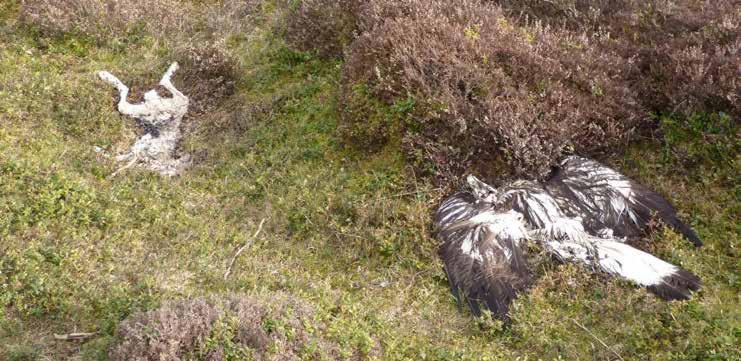
1 minute read
setting the UK’s wildlife crime priorities
The National Wildlife Crime Unit (NWCU) identifies seven key priority areas of wildlife crime in the UK . This government-funded body collects wildlife and wildlife-crime related data from organisations – including the police – and assists the police in prevention and detection of wildlife crime. Their analysis highlights local and national threats to wildlife. The current priorities, which are reviewed every couple of years, follow below 17 .
Badger persecution – this includes the horrific practice of badger baiting where badgers are dug out and set upon by dogs. It can also involve poisoning, gassing, snaring, shooting and sett disturbance/ destruction. Despite badgers having one of the highest levels of protection in law, the Badger Trust estimates 30,000 badgers fall victim to wildlife crime each year.
Advertisement
Bat crime – this can involve the destruction of roosts, hunting or killing these endangered animals. According to the Bat Conservation Trust, 97% of bat crime incidents reported to the police in 2018 involved damage/destruction of roosts.18
CITES issues – these include the illegal trade in raptors such as falcons and buzzards; ivory; medicinal and health products such as bear bile, lion bones and pangolin scales; reptiles including snakes, lizards and tortoises, and rhino horn and timber. CITES linked wildlife crimes are classified as notifiable in the UK
The collection of freshwater pearl mussels – The quest for pearls has led to the extinction of populations of this species from many rivers. These critically endangered molluscs are very important to ecosystems because of their water filtration abilities. It’s estimated only 1 in 1,000 mussels will contain a pearl.
The poaching of deer and fish, and hare coursing, where dogs are used to chase, catch and kill hares.
The persecution of raptors such as hawks, eagles, kites, buzzards, harriers, falcons and owls through poisoning, shooting, trapping, habitat and nest destruction/ disturbance.
Cyber-enabled wildlife crime
– There is a large UK market for exotic species and the trade takes many forms such as taxidermy, skulls, plants and bones as well as tusks, teeth, feathers, skins and claws. Online platforms facilitate this trade domestically and globally.19
Wild animals have a lower level of protection against cruelty in the UK than pet and farm animals, adding to the picture that their pain and suffering simply does not count. And this lack of protection is underpinned by the ‘victimless’ perception of wildlife crimes.
30,000 estimated badgers fall victim to wildlife crime each year
97% of bat crime incidents










